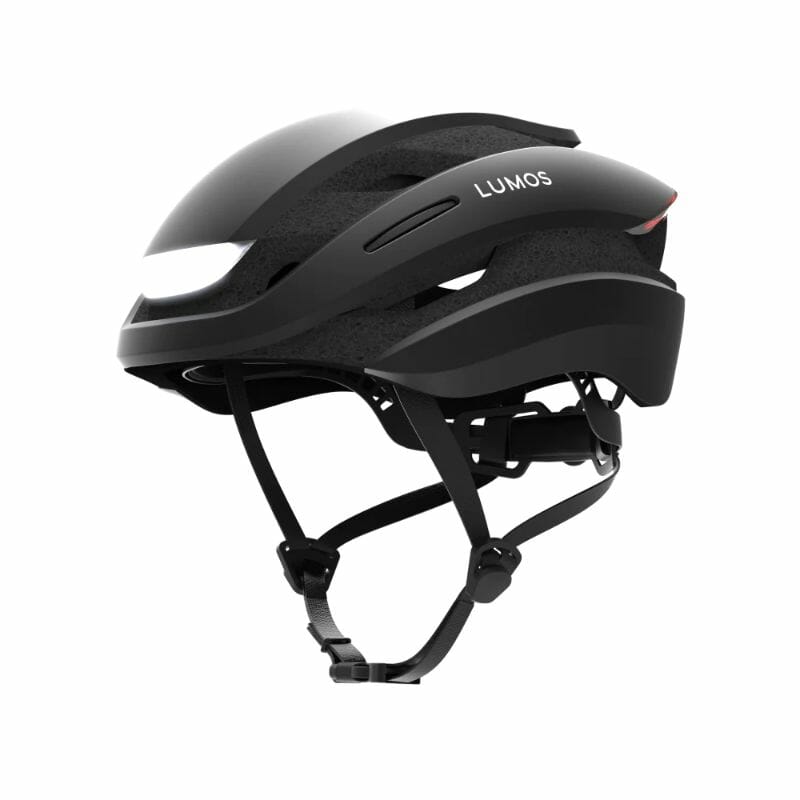12 Night Cycling Tips For Safe and Enjoyable Adventure

Do you enjoy biking but find it difficult to fit it into your busy schedule?
Well, here’s a solution: bike at night!
With the hustle and bustle of daily life, finding time for physical activity can be a challenge.
However, night cycling allows you to incorporate exercise into your routine without sacrificing your other commitments.
Here I’ll share the tips and benefits of biking at night based on my 10+ years cycling experience, including safety precautions, equipment recommendations, and how it can enhance your overall biking experience.
So grab your bike and let’s discover the joys of nighttime cycling!
12 Safety Tips when Biking at Night
Riding in the dark requires extra caution and adequate preparation to ensure safety.
Below, I will share 12 essential safety tips for biking at night, including the importance of proper lighting, reflective gear, and increased awareness of potential hazards.
1. Familiarize Your Route
Knowing your route well is crucial for a safe and enjoyable biking experience after dark.
It helps you stay on safe paths, avoid trouble caused by inadequate lighting or bike lanes, and ensures that you are well-prepared for the road ahead.
So, before you head out, take the time to map out your route, understand the road conditions, and enjoy a safe and enjoyable nighttime biking adventure.
2. Wear Reflective Clothing and Accesories
If you’re a cyclist, there are different options for reflective clothing and gear to keep you safe.
One choice is clothing with built-in reflective elements that are only visible at night. These garments blend in during the day but shine brightly when light hits them.
Another option is to add reflective tape or patches to your clothes or gear.
These accessories enhance your visibility to drivers, making you stand out even more.
Adding reflectives to your bike is a smart move for night rides or low light conditions. They let other drivers know you’re there and help prevent accidents.
Some countries require a white reflector in front, a red one in the back, and pedal reflectors for legality and safety.
3. Invest in Proper Lighting Equipment
When cycling, it’s important to have lights for better visibility.
One must-have is a handlebar light, which not only illuminates the road but also helps oncoming traffic spot you easily.
It’s like having your own guiding beacon in the dark.
However, it’s crucial to use these lights responsibly and avoid using the flash mode at night to prevent blinding yourself and other drivers.

Instead, point the light towards the ground about 20 feet ahead to ensure a clear and safe path.
Another essential light is a rear light, making you visible to riders and vehicles approaching from behind.
If you choose USB-rechargeable lights, remember that they are brighter but have a shorter battery life.
To avoid being stranded in darkness, always carry an extra battery-powered light as a backup.
4. Avoid Distractions and Be Mindful of Wildlife

Riding at night increases the likelihood of encountering a variety of animals. Keep an eye out for their reflective eyes and adjust your speed accordingly to avoid collisions.
Focus your attention solely on the road ahead. Minimize external stimuli by removing any unnecessary distractions, such as turning off your phone or keeping it on silent mode.
This will help you stay fully aware of your surroundings and react quickly to any potential hazards.
Another important aspect to consider is the brightness of your front lights.
Adjust the brightness of your front lights accordingly to avoid blinding other road users.
This promotes a safe and respectful cycling environment and allows you to maintain good visibility without compromising the safety of others.
5. Stick to Well-Lit Areas and Bike Paths
Choosing to ride in well-lit areas provides enhanced visibility, allowing you to see and be seen by other road users.
This increased visibility significantly reduces the chances of collisions or accidents caused by low light conditions.

Whether it’s streetlights illuminating the path or dedicated lighting installed along bike paths, these well-lit areas offer a sense of security and confidence while riding.
Bike paths, in particular, are designed with cyclist safety in mind. Some are separate from vehicle traffic, providing a dedicated space for riders.
These paths often come equipped with their own lighting systems, ensuring that you have a clear view of the road ahead.
6. Use High Lumen Counts For Mountain Biking
Night riding has become increasingly popular among mountain bikers in warmer climates.
Instead of worrying about cars, you can beat the heat and enjoy the freedom of riding in the woods after sunset.
To ensure your safety, it’s crucial to have sufficient lighting.
Choosing a light with a higher lumen count will provide better visibility, allowing you to see the trail and any obstacles clearly.

When mountain biking at night, I highly recommend a minimum of 500 lumens.
With this brightness, you’ll have the confidence to conquer every twist and turn with ease, even in pitch-black darkness.
Most riders prefer having two lights, one on their helmet and one on their handlebars.
But if you only have one light, simply attach it to your helmet.
7. Follow Traffic Rules and Regulations
Riding a two-wheeled vehicle is an absolute thrill!
The rush of speed, the incredible maneuverability, and the sense of freedom are simply unmatched.
But here’s the thing: sometimes, we riders get a little too carried away and forget about the basic rules of the road.

We start thinking we’re invincible, weaving through traffic, ignoring red lights, and squeezing into impossibly small spaces.
But let me tell you, these reckless habits are a recipe for disaster.
They can lead to serious accidents that nobody wants to experience.
So, let’s be smart about it.
Always use bike lanes when you can and avoid putting yourself in situations where cars might not see you.
8. Use Hand Signals
Hand signals can be a helpful method for conveying your intentions clearly to other road users, as they are easy to do and can be seen from further away than verbal cues.
It is essential that cyclists use hand signals when riding after dark, in order to ensure the safety of themselves and others on the road.
This will allow them to anticipate your movements and be prepared for any potential obstacles that may arise.
9. Bring a Portable Charger for Multi-day Bikepacking
When going on long adventures, the struggle of keeping your devices charged can be a real pain, especially if you’re not staying in a hotel.
Relying solely on battery-operated gadgets is just not practical.
That’s why many bikepacking enthusiasts like me choose to use portable chargers, like power banks, that have enough capacity to keep our lights and gadgets powered throughout the trip.
If you’re planning a multi-day bikepacking adventure, solar chargers are a game-changer. Just make sure to fully charge your charger before hitting the road.
Some solar chargers require about 30 hours of sunshine to reach their full potential.
And here’s a pro tip: save the solar power for those unexpected moments when you desperately need an emergency boost.
10. Always Inform Someone Where You’re Going
Let your parents, siblings, or close friends know where you’re planning to go and how long you’ll be out, just in case any unexpected emergencies arise.
This becomes even more important when you’re off-roading, as there are fewer people around who could lend a helping hand if something were to go wrong.
Sharing your biking plans with someone you trust not only enhances your safety but also gives them the necessary information to assist you in times of need.
It’s a smart move, especially when exploring unfamiliar areas or taking on off-road challenges where the risks of going unnoticed or getting injured are higher.
In the unfortunate event that something goes awry during your night ride, this person can quickly alert the authorities or launch a search mission to get you the help you need.
11. Avoid Cycling Alone at Night Whenever Possible
Whenever possible, cycling alone at night should be avoided.
This is especially true for unfamiliar or high-crime areas as these locations may increase the chances of becoming the victim of a crime.
Not to mention the rising crime cases in the United States recently. Better safe than sorry.
Trust your instincts and avoid any situations that feel unsafe or uncomfortable.
12. Carry Contact Info and Some Cash
Make sure that you have identification, emergency contact information, and some form of payment in case of unforeseen circumstances.
This will ensure that if you find yourself in a difficult situation or need assistance quickly, these items can be accessed quickly and easily.
Why You Should Consider Cycling at Night
Picture yourself riding in the darkness, feeling a sense of calm and tranquility engulfing you. No traffic, no blinding city lights.
Just you and your bike, exploring familiar routes in a whole new light – quite literally!
Here are some of the reasons why I personally love cycling at night.
Peaceful Meditative Practice
Riding at night is a unique experience that allows me to have a peaceful and tranquil journey with no visual distractions.
The lack of noise and activity during this time helps me to create an inner peace, getting closer to my subconscious and allowing the discipline of meditation which comes with reaping its own rewards such as clarity of thought and improved mental strength.

With this peace I am able to relax, providing a calming escape from reality while reconnecting with myself.
The opportunity for this meditative route has allowed me greater clarity when dealing with everyday issues such as stress or anxiety.
No Traffic
There’s much less traffic on the roads at night (less pollution too!), making it a perfect time to go for a bike ride.
With fewer vehicles on the road, I can enjoy a peaceful and pleasant experience without having to share the road with stressed-out commuters.
The absence of constant traffic noise and the hustle and bustle of the day provide a serene environment for me to take in the sights and sounds of my surroundings.
This peaceful atmosphere enhances the overall biking experience, allowing me to fully immerse myself in the moment.
Go Straight to Bed
The best part of exercising at night is that I know I’ll be rewarded with a satisfying sense of exhaustion when I finally crawl into bed.
But it’s not just any kind of exhaustion; it’s the kind that makes my body melt into relaxation, allowing me to recharge and rejuvenate throughout the night.
And when I wake up in the morning, I feel completely refreshed, ready to take on the day.
You see, after a vigorous morning workout at the gym or a lengthy bike ride, not only does my body feel tired, but my mind does too.
It’s a double whammy. But with night cycling, I get to experience this incredible physical and mental release, leaving me feeling truly fulfilled.
Ending The Day by Decluttering Your Mind
When the evening finally rolls around, and I’ve done all that I can do for the day, sometimes I need to take a step back and give myself a little bit of me-time.
This doesn’t have to be anything extravagant like a spa-day or something similarly expensive – it simply has to be quality time alone.
And cycling during the night provides this relaxation time as it helps me unwind from my daily stresses.
This easy habit helps me acknowledge how far I’ve come during the day despite all that hasn’t turned out as expected or planned.
Enjoy The Holidays
Holidays can often be the most challenging times for people who are trying to maintain their fitness routine.
If you’re someone who is renowned for cycling every single night, then you certainly deserve to make some exceptions during celebratory days.
The joys of having a balanced combination of a regular-cycling lifestyle and holiday indulgences brings out the best in both ends: it brings both satisfaction and wellbeing.
Types of Lights for Evening Riding
Having proper lighting is crucial for your safety and visibility.
There are several types of lights specifically designed for evening riding, each serving a different purpose.
Rear / Taillights
If you’re a cyclist, you know how important it is to have rear lights on your bike, especially when riding at night.
These little accessories are a game-changer as they alert drivers and other cyclists to your presence, reducing the risk of accidents.

There are two types of rear lights to choose from: flashing lights and solid lights.
Flashing lights are great for grabbing attention in low-light conditions, while solid lights provide a constant source of light.
When it comes to choosing rear lights, brands like NiteRider and Cygolite offer reliable options with powerful beams and reflective elements.
White Light Front / Headlights
For regular night rides on well-lit bike paths or roads with sufficient street lighting, a moderate brightness white light headlight would suffice.
These headlights provide a clear view of the road ahead, ensuring a safe and enjoyable biking experience.
However, for off-road riding or areas with minimal lighting, more powerful white light headlights are necessary.

These headlights possess a higher lumen output, allowing riders to see potential obstacles, uneven terrain, and wildlife more clearly.
It’s essential to note that the legal requirements for using front white lights can vary depending on the country or state.
Some jurisdictions require cyclists to use white lights of certain brightness levels during nighttime riding.
Helmet Lights and Other Accessories
Using white light headlights is a great first step. But why stop there?
You can take your safety to the next level by adding helmet lights and other accessories to your gear.
Trust me, these little gems are a game-changer for any serious biker like yourself. They provide an extra source of light that shines right where you need it.

And that’s not all! Reflective accessories, like vests, wristbands, and ankle straps, are another game-changer.
They improve your visibility from every angle, even in the darkest nights. Oh, and let’s not forget about reflective tape!
Applying it to your bike frame and wheels gives you that extra boost of visibility.
And if you want to expand your field of vision and stay aware of your surroundings, handlebar lights are a must-have.
Final Thoughts
Biking at night can be a thrilling and adventurous experience, but it’s important to prioritize safety.
Make sure you have proper lighting on your bike, wear reflective clothing, and follow all traffic laws.
Consider riding with a group or letting someone know your route and estimated return time.
By taking these precautions, you can enjoy the beauty and tranquility of biking at night while staying safe.
So grab your bike, turn on those lights, and hit the road for an unforgettable nighttime biking adventure!





